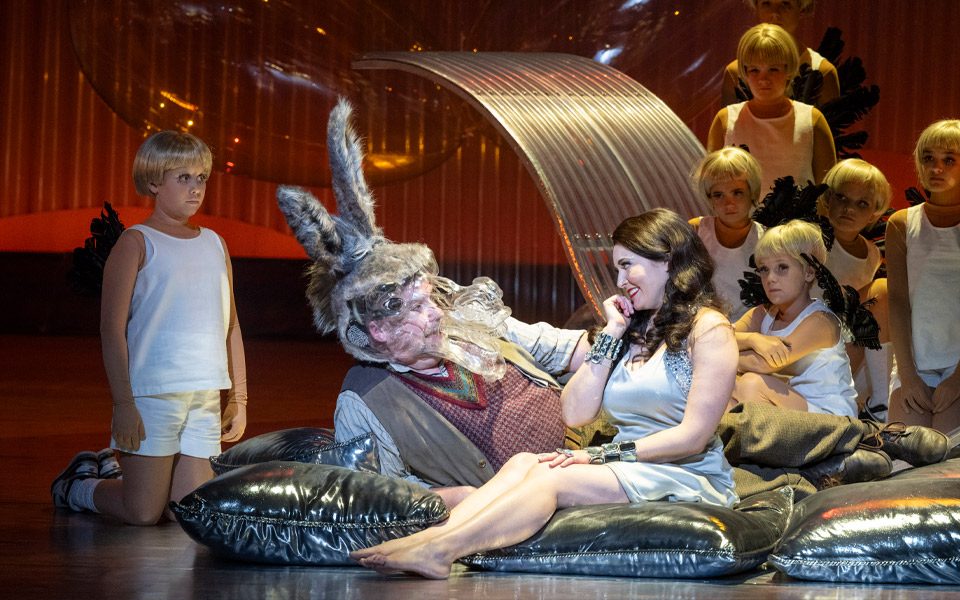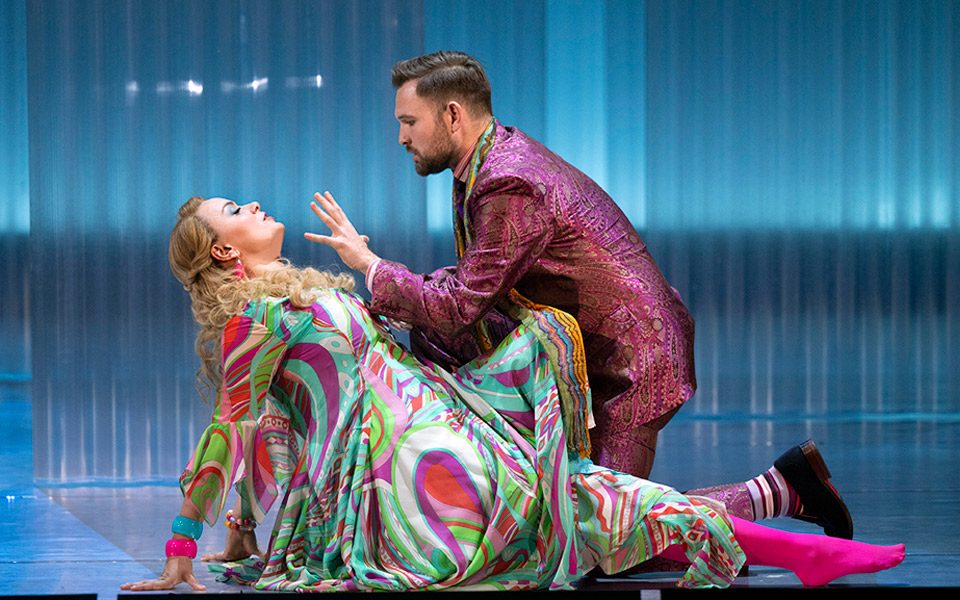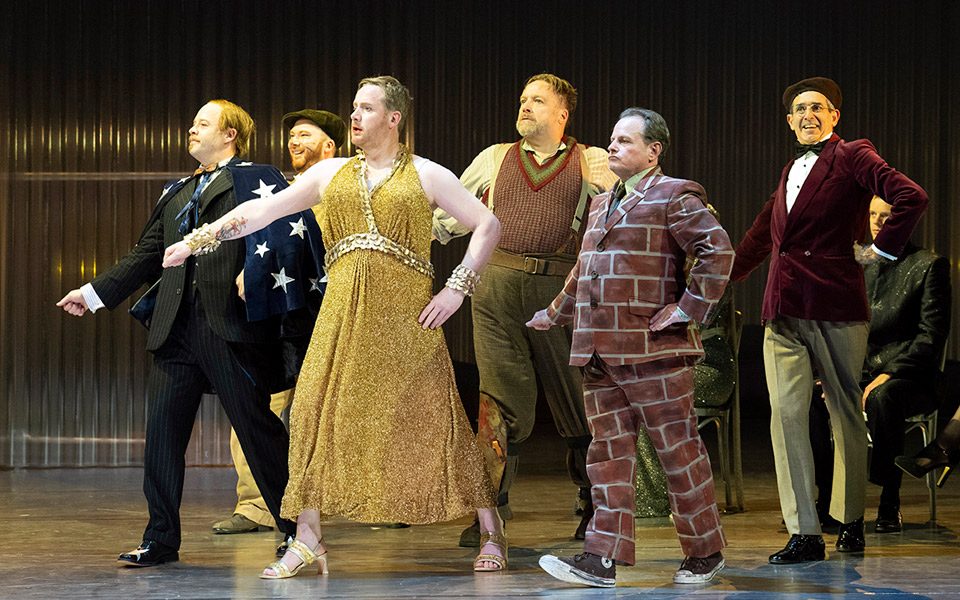
THIS is the second revival of Martin Duncan’s 2008 production. It was seen again five years later and now, 16 years on from its genesis, it reappears under the supervision of Matthew Eberhardt, who is building an impressive portfolio as an assistant director in Leeds. So it can be said to have stood the test of time.
The magic behind its success is not hard to find. Large-cast productions have become a speciality at Leeds, where chorus-members regularly step up into smaller roles. But Duncan has also looked back at 1960, when A Midsummer Night’s Dream was premiered, and built on a legitimate modernity behind it.
It is not merely night music, but dream music, drug-induced at that. Ashley Martin-Davis’s pseudo- psychedelic costumes for the lovers reveal them to be flower children. The child-fairies are identically clothed in white, with black wings and blonde, fringed wigs, the product of a dream-world, flitting around like bees seeking pollen. Oberon and Tytania gleam in shiny metal discs, like sci-fi chain mail.

Reinforcing the otherworldly theme are the tall ‘trees’ of translucent Perspex surmounted by oval ‘clouds’, all brought to life by Bruno Poet’s lighting. Not quite your traditional dream, in other words.
Equally transparent is Garry Walker’s exceptionally delicate treatment of the score. He conjures from his players an intimacy that exactly complements the goings-on above, sometimes to an almost erotic degree. Naturally this dissipates into something more earthy when the artisans are at play.
These two worlds, alongside the high voices of the fairies’ realm, offer clear differentiation between the drama’s three groups, just as Britten intended, with Daniel Abelson’s lively Puck as go-between, his trumpet-and-drum motif sectionalising the score. Such clarity is magical indeed. James Laing’s commanding Oberon, a stalwart from 2008, is well matched by Daisy Brown’s yearning Tytania.
The outstanding performance of the evening comes from Henry Waddington as a blustering Bottom, the other veteran holdover from the production’s start; he is positively Falstaffian in his donkeydisguise.

Colin Judson, the original Flute, reappears as Snout here, alongside Dean Robinson as Quince, Nicholas Watts as Flute, Frazer Scott’s Snug and Nicholas Butterfield’s Starveling, an excellent team.
There is also exceptional teamwork – and beautiful singing – from the dozen children as fairies, who are spearheaded by Kitty Moore, Dougie Sadgrove, Lucy Eatock and Jessie Thomas as Peaseblossom, Moth, Mustardseed and Cobweb respectively.
Nor is there is any shortage of passion from the four lovers. They are distinct personalities, Camilla Harris a flighty Helena as opposed to Sian Griffiths’s determined Hermia, with Peter Kirk’s Lysander and James Newby’s Demetrius more like rutting stags when they clash. All bar Griffiths are making their company debuts. The aristocrats, Theseus and Hippolyta, are given due gravitas by Andri Björn Róbertsson and Molly Barker.
The wit and wisdom we had first enjoyed in 2008 is resuscitated in spades.
Review by Martin Dreyer

